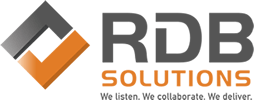Yes, it is worth it, in the end!
Software integration is like pulling up the carpet in a fully furnished home, it is a challenge regardless of the transition length or size. Your new software company should have an integration plan with a carefully thought out schedule to discuss with you. A few examples of items to anticipate are:
- Gain remote access to the server
- Install database software
- Install Lumber/Trader Expert on server
- Overview meeting with staff
- Enter master data
- Detailed staff training
- Overview meeting with traders
- Training for traders/sales
In the interest of minimizing interruptions to your company, the following are several items to engage your staff in building a quality implementation plan:
As I mentioned in one of my previous blog posts, How to Choose the Right Software Company for you, employee engagement is a valuable tool during the decision process but you also have an incredible opportunity to engage staff during the implementation process and the effect will be better than you bargained for. I’m sure I don’t have to tell you about the rewards that team building and staff empowerment have on productivity.
So, how do you engage your employees in the implementation process? Anne Prins,
Director of Growth at Hot Air Blog says, “Evaluate each of them to determine which of the five groups they fall under”, see below: [i]
- Innovators – These are technology enthusiasts by nature, and they’re excited to dive in and figure out how the new software can improve their existing workflows. Engage & encourage these Innovators! They will be your champions of change.
- Early Adopters – Like innovators, these users will try new software faster than the majority. Getting buy-in from this group is critical because their opinions influence how the Early Majority feels about trying the new tool.
- Early Majority – This group is more practical in their approach to new software. The Early Majority typically waits until the software is vetted by others. They want to know how new software improves their existing workflow before they feel comfortable adopting it.
- Late Majority – These users will only adopt new software when they need to, or when it becomes unreasonable not to. The Late Majority will use the software once you’ve made it a concrete part of your business operations.
- Laggards – Laggards tend to use familiar technology and software as long as they possibly can. They’re often uncomfortable learning and using new tools. The only way to move this group may be to force them to use the new software by eliminating legacy options.
Create an understanding with your staff, engage them early and often, set specific goals and update staff with your timeline regularly. We all know who the decision makers are but your staff will certainly appreciate your efforts.
Training should be flexible and meet the needs of your company. Do you want individualized in-person or online training? Do you want instructor-led training classes? Do you want the software company to train a team of your employees on the processes so they can train the rest of your staff? There are options and it is up to you and the software company to navigate what the best option is for your company. It is important to show your employees how exciting this transition is, how useful the new software will be for them, and to set a fair but firm timeline.
Let’s set real and proper expectations here. Having a transition path doesn’t mean that you won’t have any hiccups while integrating. What it does mean is your new software should have utilities that will transition the information from your database(s), i.e. vendors, customers and general ledger accounts from your old software to your new software or, at least, have the ability to code one for you. This saves time in transition and helps to alleviate some of the stress.
With the ease of use, I see $avings! Who doesn’t like a stronger bottom line? If your new software is easy to use, it will likely be easy to learn, manage data entry errors, and increase productivity. The effect of this is seen in the strength of your team and, of course, your bottom line.
Taking your company through a software transition is stressful regardless of how much you prepare or how great the software company is. The best way to ensure the least amount of stress is by following the steps outlined above. Make sure to encourage employee engagement, know your needs, and build a viable plan for transition. If you follow these steps, your transition will be as stress-free as one can possibly be.
